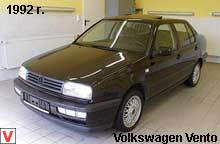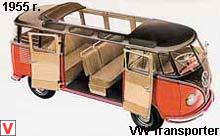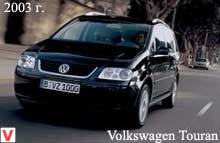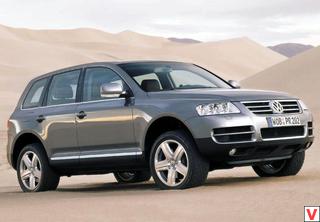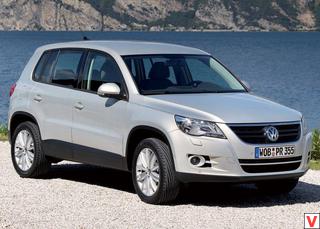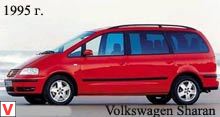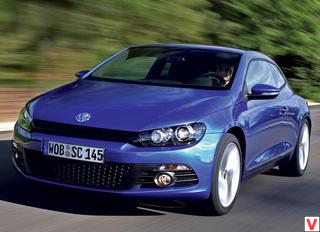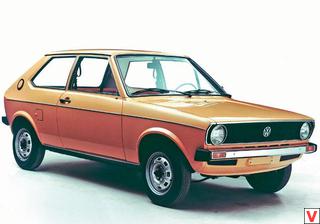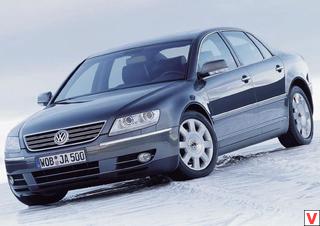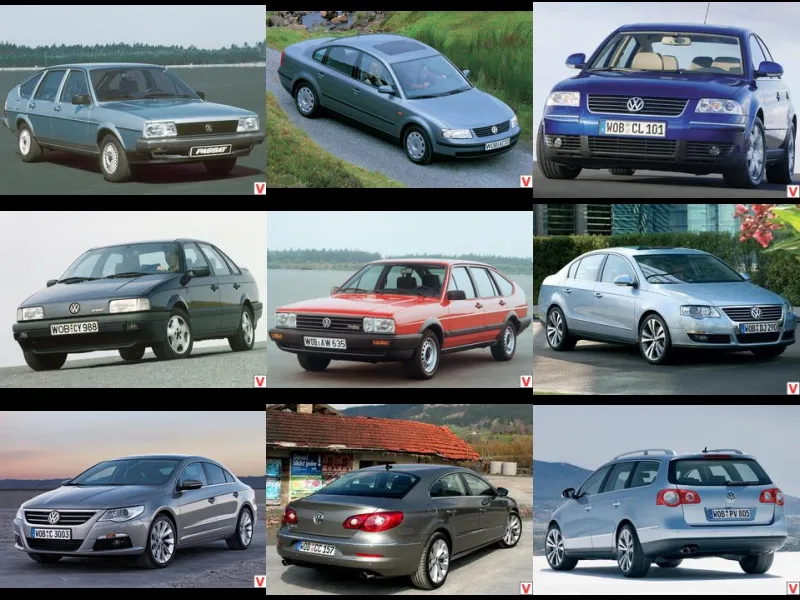
Volkswagen Passat is rightfully one of the most popular and favorite cars in Europe today. When in 1973 a new model was created, they first wanted to assign only the index 511, but later decided to stop on a proper name, Passat, by analogy with the atmospheric phenomenon that determines the climate on the planet. The ancestor of the new family is considered the front-wheel drive Passat, released in 1973. It was offered in numerous versions with engines of displacement from 1.3 liters. up to 1.6 l. In 1980, the world was presented with a completely redesigned model Passat, 3- and 5-door hatchback, in several versions: G (base), L and GL.
Installed on the car engines: 1.6-liter diesel capacity of 54 hp and gasoline 1.3-liter capacity of 55 hp, 1.6-liter capacity of 75 hp and a 1.9-liter 5-cylinder 115 hp. (it was installed only by special order and was not included in the basic package). In the same year, the Passat model range was supplemented with a 5-door station wagon, which received the name Variant. In January 1981, the Passat was upgraded. They began to install wide rear and front spoilers. Appeared "E" model (elektropaket), and KP with "stretched" fifth gear. In February of the same year, Volkswagen developers produce a 1.6-liter engine with a capacity of up to 85 hp.
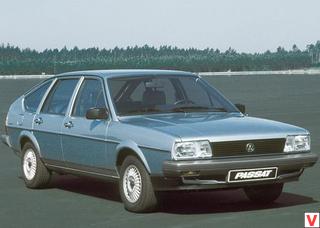
and a new model with a separate Santana boot. All 3 models - Passat, Variant, Santana - are front-wheel drive structures with longitudinal motors, a fairly spacious comfortable lounge with a good level of comfort. The suspension of the wheels of these models can also be described as fairly reliable and providing good directional stability. - 1.6 liter capacity, 75 or 85 hp (depending on the carburetor), as well as 110 hp, with petrol injection (Passat GLI), consuming 10-13 liters of gasoline per 100 km. This engine is “obtained” from a 1.5 liter engine by increasing the diameter of the cylinders. Since 1984, this motor is not installed.
- 1.6 liter capacity, 75 hp, consuming about 10 liters of gasoline per 100 km. - a volume of 1.8 liters, with a capacity of 90 hp, consuming about 11 liters of gasoline per 100 km. This motor is also installed since 1984. - 5-cylinder engine capacity of 1.9 liters, 115 hp (from the Audi 100), consuming about 12 liters per 100 km. In August 1984, the Passat / Santana all-wheel-drive models: Topic and Country go off the assembly line, and the station wagon still has the syncro option.
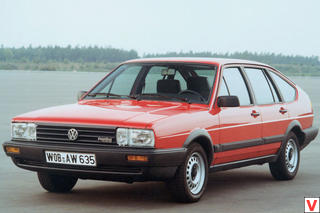
In January 1985, the modernization of the entire model range begins: new bumpers, grille, rear lights and rear window for the hatchback models. Santana acquires a new name - Passat Stufenheck, which translates as "back in the form of stairs" (sedan). Model Passat Variant syncro begins to be released in a modification of the GT and in April is equipped with ABC. 1985 - the beginning of the production of modifications Passat Arena. 1987 - Passat Trophy presented to the attention of buyers. In February 1988, the third generation Passat sedans appear. They received the symbol B3. The new family differed from the previous ones in increased sizes and smoother body lines.
In 1989, the all-wheel drive version of the syncro was released. It should be noted that in this modification, when slipping the front wheels, the viscous coupling briefly connects the rear drive. The car of this generation has a standard ground clearance and engine located in the transverse position.
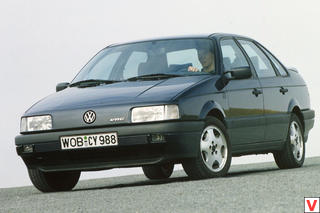
The next upgrade of the Passat took place in 1993 and although, in terms of their design, cars are not significantly different from their predecessors, they are considered to be the fourth generation of the Passat, which received the B4 index. The new model has an updated interior, engines with improved performance, airbags, ABC in standard equipment, other headlights and bumpers. The fifth generation Passat family was introduced to the world in 1996. And this time, new items were significantly different from their predecessors. First of all, the engines are now positioned longitudinally, and not transversely as before.
It is also worth highlighting the improved suspension and modern electronic filling. Models are made only with a sedan and 5-door station wagon Variant. A prominent representative of the fifth generation is the Passat B5. The car has a large spacious interior, where expensive plastic front panel is adjacent to wood inserts on the doors and front console. The seats are very comfortable and covered with velor, and the steering wheel and gearbox - leather. The basic equipment of the car looks impressive, it includes: four airbags, ABS, electric equipment for front passengers, climate control, height-adjustable driver's seat, tinted windows, etc.
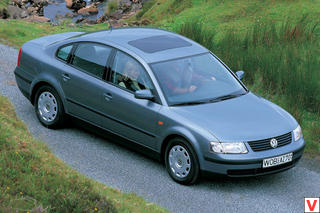
In addition to the basic configuration is offered a choice of three more: "Comfortline", "Trendline" and "Highline". The first is distinguished by trim in cream tones and inserts of light wood, full power, alloy wheels and more comfortable front seats, with lumbar support function. For fans of sports style offered equipment «Trendline». Here on the front panel the wood was replaced with polished aluminum and a three-spoke steering wheel was installed. The Highline package is characterized by the achievement of maximum comfort. The color scheme of the cabin is maintained in three colors: blue, black and beige. The seats have double leather and fabric upholstery.
- a five-cylinder engine "VR5" volume of 2.3 liters. The letter "R" in its name means that the cylinders are located with a minimum angle of collapse, almost in a row, only in a checkerboard pattern. Due to this, the engine was very compact and light. - 1.8-liter turbocharged. Develops a solid 150 hp Thanks to the low-pressure turbine, it powerfully pulls at low speeds, creating the illusion of greater power and greater displacement. - six-cylinder engine capacity of 2.8 liters. Also, the creators offer three options for the transmission: five-and six-speed manual and "automatic".
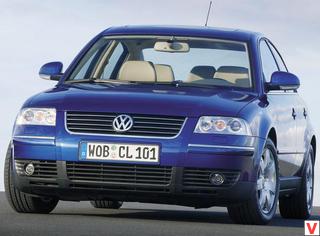
Plus two types of drive - traditional front and full 4Motion. The fifth generation is significantly different from the previous one in handling the car; specialists are inclined to believe that such dramatic changes were provided by the multi-link front suspension. In 2000, Volkswagen updated the Passat, the version received the Passat GP index. The appearance of the new model has become more solid and dynamic. The original round shape of the rear lights complements the sports image of the car. Salon got a large number of decorative inserts "under the tree", leather and chrome parts.
The vehicle equipment includes ABS, ESP, front and side airbags, air conditioning, which can be optionally supplemented by an autonomous cabin ventilation system, powered by a solar panel located in the sunroof. The main task of modernizing the range of engines is to increase power and improve environmental performance. All gasoline engines comply with Euro 4 standards, and diesel engines comply with Euro 3. The updated Passat will be equipped with 5 gasoline and 3 diesel engines with a capacity of 90 hp or more.
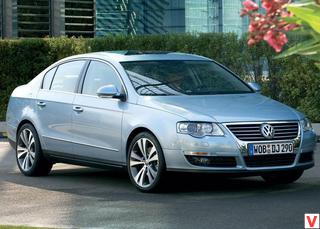
in a 1.9-liter diesel engine with direct fuel injection to 190 hp the gasoline engine V6 of 2.8 liters. The model with a six-cylinder turbodiesel with a capacity of 150 hp, in which excellent dynamic characteristics are combined with outstanding fuel economy, was very popular with practical Europeans. The average consumption of such a car is only 7 liters per 100 kilometers. Summing up, we can say that this generation Passat has become noticeably more comfortable, has good heating, ventilation, high-quality sound insulation and excellent equipment. A special place is occupied by exclusive all-wheel drive models Passat W8 and Passat Variant W8.
The design, thought over to the smallest detail, combines traditional forms and modern style. Spacious, comfortable lounge with high-quality finish. Electrically controlled and electrically heated seats, Climatronic, which maintains a constant set temperature. But the most important thing is the four-liter engine W8 with a row-offset arrangement of cylinders and all-wheel drive transmission. Engine capacity is 4.0 liters with a power of 275 hp He is able to spin up to 6300 rpm and has a truly sporty character, but it is quite economical, the average fuel consumption will be 13.1 liters per 100 km.
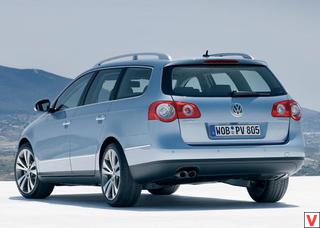
It is worth noting the characteristic smoothness of the engine, which is achieved by the use of two special balancing shaft, eliminating unwanted vibrations. Acceleration to “hundreds” takes 6.5 seconds for a car with a manual gearbox, 7.8 seconds for a “automatic”. The maximum speed of the Passat W8 is electronically limited to 250 km / h. All-wheel drive transmission provides not only improved maneuverability, but also improved handling. Active safety systems are complemented by the ESP electronic stability control system, the ASR traction control system and the system of accelerating the activation of full braking Brake Assist.
Active safety are designed to enhance bi-xenon headlights with dynamic adjustment of the range of light. Such headlights in addition to the best light output have a special movable screen that regulates the switching of low and high beams. The system of dynamic adjustment of the range of light allows adjusting the changes in the position of the light beam caused by tilting of the car body during acceleration and deceleration in milliseconds. And of course, it is worth mentioning the means of passive safety: two frontal, two side airbags and head-curtain airbags from the windows. Seat belts with pyrotechnic pretensioners are provided for front and rear passengers.
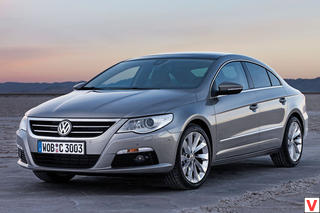
In the event of an accident, the on-board computer automatically unlocks the central locking and shuts off the fuel pump to prevent dangerous fuel leakage. The world premiere of the sixth generation Passat was held at the Geneva Motor Show in March 2005. A little later, the Passat Variant wagon appeared with a huge trunk volume from 603 to 1731 liters. The car is designed on the increased and upgraded platform A1. Passat, which has always performed in the class “D” on the European classification, has grown greatly in size. The length is 4770 mm (62 mm more) and the width is 1820 mm (74 mm more).
As a result, Passat came close to the representatives of the “E” class (BMW 5-series, Mercedes E-class, etc.). Due to the increased dimensions, a lot more free space appeared in the cabin, especially in the rear seats. The design of the car is designed with an eye on the luxurious VW Phaeton sedan - from it the Passat 2005 inherited the silhouette of the body and the style of the front end with large headlights and a massive grille. To support the image of a prestigious and respectable car, the Passat has received many fashionable and useful things: light and rain sensors, bi-xenon headlights, as well as a smart on-board computer.

The car is equipped with a contactless ignition key, cruise control, which automatically maintains the distance to the vehicle in front, the navigation system and climate control. In addition, for the first time in history, all Passat modifications received a rear multi-link suspension with the effect of passive steering, electric power steering, electric parking brake and electric trunk lid.
A complete set Trendline (eight PB, ABS + EBD, ESP, immobilizer, air conditioning, chip key, heated glass, washer nozzles and front seats, electric mirrors and front windows), Comfortline (optional cruise control, chrome side window framing, sunroof for dlinnomer, rain sensor, electric all windows) and the most luxurious Highline (optional leather interior, separate climate control Climatronic, 16-inch alloy wheels). Passat B7 got a few engines. The base has a volume of 1.6 liters and a capacity of 102 hp. Also, two petrol with direct fuel injection FSI, 1.6 (115 hp) and 2.0 (150 hp).
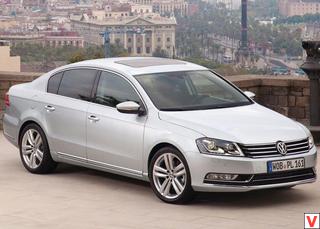
The volume of diesel engines will be 1.9 liters. and 2.0 l. (105 and 140 hp respectively). A little later there was a version with a 6-cylinder unit of 3.2 liters. 250 hp The engines are paired with a 5- or 6-step “mechanics” or a 6-step “automatic”. The top version is equipped with a DSG sequential gearbox.
Great attention was paid to safety - even in the basic configuration, the car received six airbags and a new generation ESP + stabilization system. Based on the VW Passat B6 was designed four-door coupe, which was called the Passat CC. The letters CC in the model name are decoded as “comfort-coupe” (it. Comfort-Coupe). The car has been produced since 2008 at the concern plant in the city of Emden. The CC model is based on the usual Passat, but differs in size. The coupe is 30 millimeters longer, 36 wider and 52 lower than the sedan.
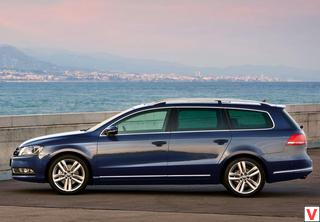
The total length of the Passat CC is 4795 mm. The drag coefficient of the Passat CC is 0.29. Exterior distinguished dynamic contours of the body, more predatory "muzzle", huge taillights. Despite the uniform style, the Passat sedan and the CC have no common body parts. The grille with two large crossbars and the VW logo looks more powerful. In the lower part there are three large air intakes, direction indicators and fog lamps integrated into the bumper.
Below is a sports spoiler, designed, according to the idea of engineers, to increase downforce at high speeds. The sloping roof smoothly flows from the windshield to the trunk, leaving the rear rack. Side windows form a narrow arc, delineated with chrome trim. Frameless doors give the Passat CC an extraordinary elegance. A sporty, well-defined shoulder line connects the front wheel arches and taillights.
No less respectable is the upper part of the doors above the chrome moldings and extended wheel arches above the standard 17-inch wheels. The sporty character of the car is also reflected in the interior. Inside the differences from the Passat sedan is not as much as the outside. New steering wheel and door trim, seats with more developed lateral support, as well as other buttons and climate control twists. An optional panoramic roof makes the cabin more light and visually expands the space above your head.
The choice of buyers offers inserts made of natural wood and brushed aluminum. In the decorative door panels around the contour, you can embed a backlight, which creates a pleasant atmosphere in the cabin at night. The trunk volume of the Passat CC is 535 liters, which is 30 less than the sedan.
With regard to technology, the CC has a similar sedan stuffing. Is that the choice of engines a little - five of them, three of them are gasoline, and two diesel. The last two two-liter TDI, one 140-strong, the other 170-strong. The top-position in the lineup of engines is a 3.6-liter, 300-horsepower V6 engine, serially equipped with a DSG dual-clutch gearbox and 4Motion all-wheel drive. This engine is able to accelerate the coupe to "hundreds" in just 5.6 seconds. Top speed is electronically limited to 250 kilometers per hour.
The simplest petrol “engine” is a 1.8-liter TSI with 160 power, a step higher again, TSI, but already 200-horsepower and two-liter. In addition to the top version, all the others in the “standard” are equipped with a 6-speed manual transmission, while the list of options includes both DSG and “automatic”. It differs from the usual Passat and car suspension. It is equipped with a new Dynamic Drive Control (DDC) system, which allows you to change the settings of shock absorbers and steering. Initially, the system is in the Normal position, but you can make the trip more comfortable by choosing the Comfort mode, or more rigid if you turn on the Sport position.
From the base Passat version of the coupe is not only different forms, but also a higher level of equipment. In the arsenal of a number of electronic driver assistants. Including an innovative lane Assist lane retention system, the ACC adaptive cruise control with the option of automatically maintaining Front Assist distance, Park Pilot parking sensors and Rear Assist rear camera. Standard equipment includes dual-zone climate control, six airbags, a winter package, sports seats, alloy wheels, a chrome finish, etc. September 30, 2010 at the Paris Motor Show held the world premiere of the seventh generation Passat.
External changes in the model - cosmetic. The exterior has been modified in accordance with the new corporate identity of the brand. Headlights have lost a bizarre form, instead of them left and right monoblocks almost regular geometric shape. The car has become more refined, disappeared playful rounded taillights. The grille has decreased in size in height. In general, the design of the seventh generation is inspired by the appearance of the older models of the brand, in particular Phaeton.
The changes in dimensions are also insignificant: in comparison with the size of the predecessor, the Passat 7th generation sedan has grown in length by 4 mm (4769 mm), in height by 2 mm (1474 mm), its width has not changed (1820 mm). The seventh generation salon has changed a little more noticeably - it has become even better and more thoughtful. The dashboard was finalized. For example, a huge display screen, which is located between the tachometer and the speedometer, made some devices move to another place. In addition, the steering wheel has become different.
The location and design of some buttons on the center console has changed, and an analogue clock appeared on top of it - a rather stylish attribute. The new door trim looks more expensive and more pleasant to the touch. New seats are optionally equipped with built-in massagers and ventilation. In terms of the technical characteristics of the Passat in 2010 has changed more. One of its main updates affected the proposed engines. In full agreement with the current fashion, everything is environmentally friendly and economical in terms of fuel consumption, new engines “eat less”, less “secrete”, but at the same time squeeze out more horsepower.
The basic petrol version 1.4 TSI has a modest 1.4-liter motor. This engine has 4 cylinders, direct fuel injection, and is also equipped with a turbocharger. All this together allows you to give power to 122 hp Acceleration to 100 km / h in 10.3 seconds with a manual 6-speed gearbox. Fuel consumption of only 6.3 liters in the combined cycle, and with a 7-step robot, and does 6 liters. The maximum speed for the version with mechanics is 203 km / h.
Above is version 1. 8 TSI with a proven engine of 1.8 liters. With the same 4 cylinders, direct injection and turbocharging, its power reaches 160 hp Moreover, such power is developed only on versions 1.8 TSI for Europe. The rest are content with only 152-strong option. With this engine sedan accelerates to 100 km / h in 8.5 seconds. Fuel consumption of only 6.9 liters in mixed mode.
Version 2.0 TSI with a 2-liter turbo engine has a power of 210 hp The 100 km / h sedan with this engine and 7-step robot overcomes the bar in 7.6 seconds. The maximum speed reaches 236 km / h. The top petrol version is equipped with a 3.6-liter V6 with a capacity of 300 hp. As for diesel modifications, the most economical one has a volume of 1.6 liters and a power of 105 hp. This engine consumes an average of 4.2 l / 100 km, and carbon dioxide emissions recorded at 109 g / km. Version 2.0 TDI is available in 140 and 170 hp versions. Complementing the picture is a natural gas engine (1.4 liters EcoFuel, 150 hp) and a bio-ethanol engine (1.4 liters TSI MultiFuel, 160 hp).
VW Passat is still offered in three equipment options, which include modifications Trendline, Comfortline, Highline. The basic equipment Trendline is only available for low-power model 1.4 TSI, but it is quite rich. Stabilization system, audio system, 6 airbags, air cooling system, adjustable seat height, as well as electric equipment. In addition to the basic equipment, the Comfortline complete set offers a more powerful engine, a security system, a gearshift trimmed with high-quality leather, an air-conditioning unit, a two-zone, wider tires, a rain sensor and much more.
The top grade Hiline equipment involves equipping the car with sturdy leather seats, a robotic DSG box, an interior with aluminum inserts, wheels with increased 17-inch diameter and even wider tires. Passat seventh generation received many modern helpers when driving. Among them, the emergency braking system at low speeds, which is designed to protect pedestrians (Automatic Distance Control detects the noise and automatically stops the car at speeds up to 30 km / hour).
The system against the driver falling asleep at the wheel makes sounds that will not allow him to doze off, and the dashboard will highlight the appeal with a proposal to rest. The function of automatic switching from high beam to low beam (active head light or Dynamic Light Assist), allows not blinding oncoming drivers. Easy Open's trunk access feature allows the driver, whose hands are busy, to open the cargo hold of the car with a slight movement of his leg under the rear bumper, where a special sensor is hidden. Simultaneously with the release of the seventh generation Passat in 2011, the Passat CC was restyled.
The car received a new design of the front and rear, made in the style of the seventh generation VW Passat and restyled flagship sedan Phaeton. Appearance has changed due to bi-xenon headlights and LED taillights. The grille has received a chrome finish. Salon also received a number of changes.
Enriched with several elements of the interior of the model Phaeton, among which are striking analog clock. The front seats can now be supplemented by a massage function. Some of the passive safety systems are already available as standard. For example, the system for determining driver fatigue.
In the list of options appeared a system of control over the "dead zones" and recognition of road signs, automatic parking attendants of the new generation, automatic switching of the main beam and specially for lazy drivers a system of opening the trunk with a foot was invented. The line of power units Volkswagen Passat CC remained the same.
